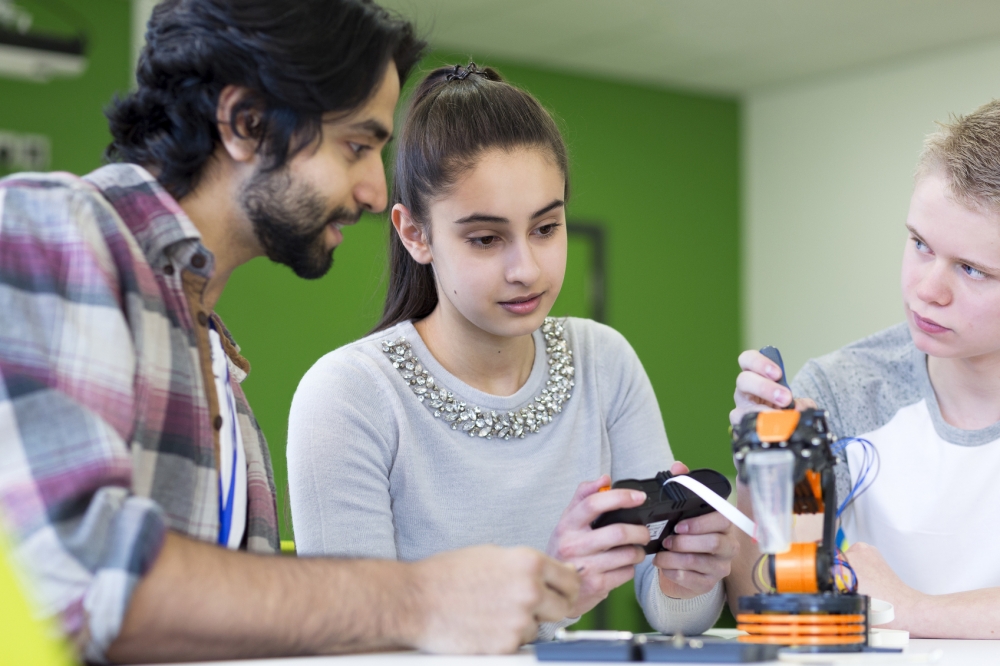
The STEM Pipeline

Transitioning from high school to college isn’t always smooth. For students with learning disabilities, the passage can be especially difficult.
So Michael Gottfried, an associate professor at UC Santa Barbara’s Gevirtz Graduate School of Education, sought to determine factors that assist such students in their progression through the K12-to-college pipeline.
Gottfried and Ph.D. student Jay Plasman analyzed a large nationally represented U.S. Department of Education longitudinal data set of high school sophomores and found that taking applied STEM (science, technology, engineering and math) courses increased the success of students with learning disabilities. Their findings appear in the journal Educational Policy.
“I coined the term ‘applied STEM,’ but the courses that can be assigned to measuring categories within that were developed by the U.S. Department of Education,” explained Gottfried. “Intro to Computer Science and C++ programming are considered applied STEM courses. These classes are still very rigorous but also provide new and unique ways for students to see the relevance of the work in the real world.”
According to Gottfried, traditional courses may not be right for students with learning disabilities, but not because they aren’t capable of doing the math or science. “If a learning disability makes it difficult to grasp the abstract nature of AP Calculus in class, maybe taking an applied engineering course can make other connections more feasible,” he said. “If you’re able to see the connections between, say, a derivative and how an airplane flies, then maybe taking learning out of the theoretical but keeping it as rigorous as an academic course and grounding the process in a different way of learning makes more sense. This different way of thinking is much more hands-on but teaches the same skills in a way that can be applied directly to college and ultimately to a career.”
Using the U.S. Department of Education data set, Gottfried and Plasman analyzed every high school course in the database that students took. Examining the subset of students with learning disabilities who chose applied STEM courses, they calculated a 2 percent dropout rate for these pupils versus 12 percent for students with learning disabilities who did not take applied STEM classes.
“We found that while everyone benefits from these courses, they really help those with learning disabilities, a group that has a 1.5 times higher risk of dropping out of high school,” Gottfried explained. “Applied STEM classes provide a potential way to lessen that risk. These courses are geared for engagement and offer new ways of thinking about old STEM topics.”
The researchers’ analysis also demonstrated that students with learning disabilities who take applied STEM courses are 2.3 times more likely to enroll in college immediately after high school than those who do not. Even two years after completing high school, this same cohort is more likely to go to college.
“These findings show that addressing early steps in the STEM pipeline — particularly in high school — not only gets students interested in STEM but also helps them persist with it,” Gottfried said. “The next step would be to determine what these students do once they get into college. There’s a lot of research that looks at end-of-high-school outcomes or majors in college, but there’s not a lot of research that examines what students take when they first get to college and whether they stick with it.”
This study was funded by the National Science Foundation.



